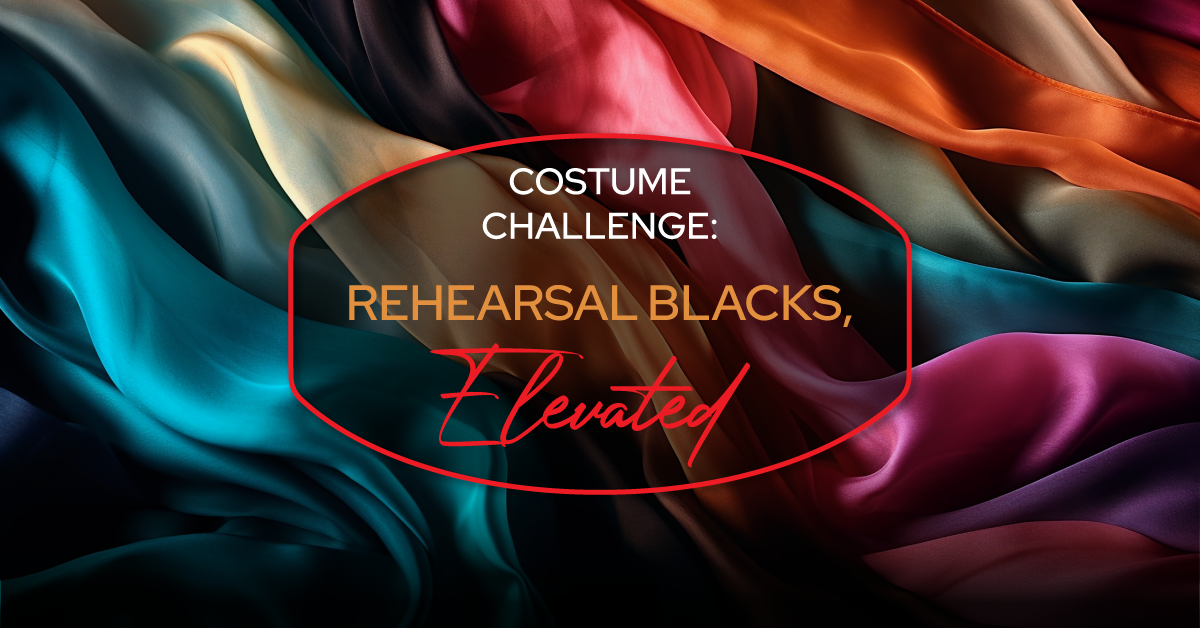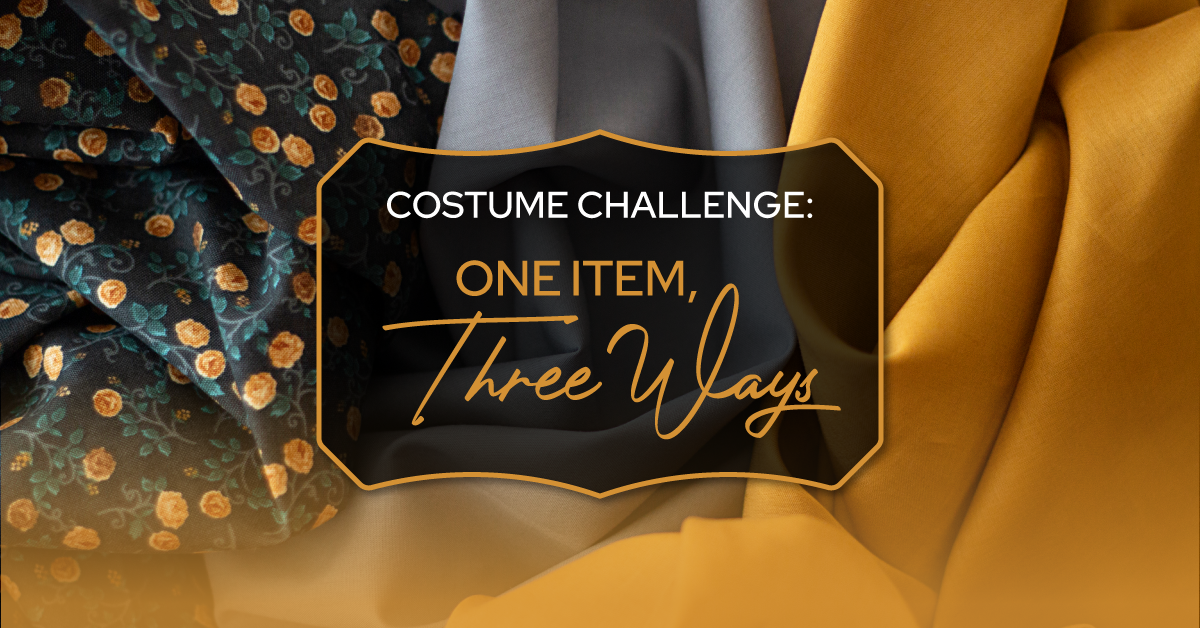Agatha Rex by Lindsay Price is a bold high school take on Antigone - packed with heart, conflict, and a powerhouse ensemble. One girl. One stand. One huge risk. *NEW COMPETITION VERSION AVAILABLE!*
Costume Challenge: Rehearsal Blacks, Elevated
If you’re working on a show with a tiny budget, one way many drama teachers have saved funds is by having student actors wear “rehearsal blacks” onstage — plain black pants and long-sleeve shirts. These items create a neutral visual palette. They’re easy to find and buy, generally easy to move in, and they allow the focus to be on the students’ performance.
But rehearsal blacks don’t have to be plain. Let’s elevate our rehearsal blacks and use them as a tool to enhance the play. The following exercise gives students the opportunity to consider how thoughtful and creative choices with rehearsal blacks can denote character, status, mood, atmosphere, and more. Students can complete this exercise by sketching, using online images to create a mood board, or using black clothing items that they own to create character looks.
Instructions
1. Introduction: List and analyze various pieces of clothing and the words, phrases, moods, or feelings that each item conjures. Don’t think about the colour of the items or items with logos; just imagine plain clothes for this section. Here are a few examples:
- Tops: tank top/muscle shirt, t-shirt, long-sleeve shirt, button-down, turtleneck, crop top, sweater, sweatshirt
- Bottoms: dress pants, yoga pants, leggings, jeans, skirts, cargo pants, capris, cutoffs/”jorts” (jean shorts), sweat pants
- Shoes: sneakers, flats, heels, boots, flip flops, crocs, slippers
- Layering pieces: cardigan, hoodie, jacket, vest, bathing suit/coverup
- Accessories: hat, cap, belt, jewelry, scarf, bag/purse, hosiery/socks, tie/bow tie, hair accessories
- Miscellaneous: sports wear/uniforms, work uniforms, scrubs, military uniforms, suits, tuxedos, gowns, vintage/retro items
Be sure to write down any interesting ideas that you think of.
2. Next, compare and contrast different fabrics and style choices. For example:
- A dress made of cotton vs. satin vs. denim vs. lace
- Ripped jeans vs. unripped jeans
- Skinny jeans vs. baggy jeans, flared vs. straight-legged, capris vs. cutoffs
- A black suit vs. a black tuxedo
- A baseball cap worn forwards vs. backwards
What do the different fabrics and style choices make students think about? What feelings or moods do they evoke? What do they say about the character and their personality and their choices?
3. Select a character from a play you’re studying or a play of your choosing. Using only black clothing and accessories, create a costume design for the character that shows their personality, evokes a particular mood, or is appropriate for a part of the play. Students may present their design in one of the following ways:
- A costume sketch, with clearly labelled item and fabric choices
- A digital mood board, using images found online
- A physical mood board, using magazine clippings and fabric swatches
- A live costume creation, using students’ own items or items borrowed from friends/family/school costume stocks (either presented live in class or through a series of photographs showing front, side, and back of costume, with optional close-ups of accessories)
For example, if students are studying Romeo and Juliet, they might choose for Juliet a short black summer dress, black sandals, and a black bangle bracelet at the beginning of the play, or a long black dress, black slippers, and black veil when she is in the tomb at the end of the play.
4. Regardless of the method of presenting the costume design, students will include a brief (one page or less) written piece describing why their costume design choices make sense for the character. Why did they choose those specific styles or fabric choices? What mood are they trying to evoke? Why are those items appropriate for that character? What are they trying to say, or what story are they trying to portray through the costume choice?
5. Take it a step further:
Option 1: Using only black clothing and accessories, create three costume designs for your character that show their character arc throughout the play. Using the Romeo and Juliet example, Romeo might wear a black hoodie, black ripped jeans, a black cap, and black Converse sneakers at the beginning of the show; a black suit when he and Juliet get married, and a wrinkled black t-shirt (instead of the hoodie) when he kills Tybalt and is banished.
Option 2: Using only black clothing and accessories, create an overall “look” or “aesthetic” for groups of characters, to show their connection or social status. Perhaps Romeo and Benvolio wear Mad-Max-style black leather jackets and combat boots, while Lord Capulet and Tybalt wear black suits. Why did the student choose that aesthetic for that group? Give examples from the text as applicable.
Related Articles
The Drama Classroom Companion
by Lindsay Price & Kerry Hishon
The Drama Classroom Companion is filled with articles and exercises to build the skills needed for theatrical performance as well as real world skills like creative thinking, critical thinking, collaboration, and communication.
The Rehearsal Companion
by Kerry Hishon
You’ve chosen the play, paid the royalties, done the script analysis, held your auditions, and cast the show. Tomorrow is the first rehearsal. Are you ready? Really ready? The Rehearsal Companion can help!





